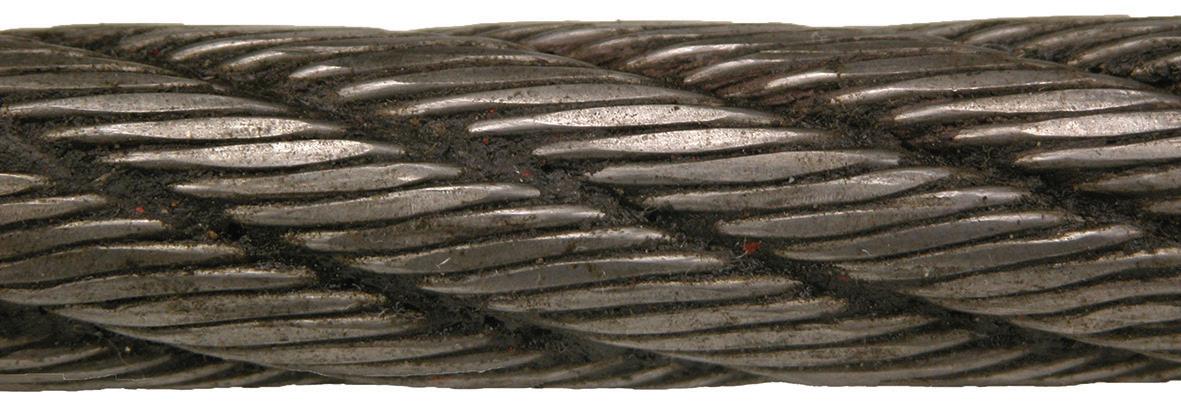
1 minute read
Inspection Criteria INSPECTION CRITERIA FOR WIRE
from 2024 Catalog
by Lift-All
Remove slings from service when:
• Capacity information is missing or illegible.
Advertisement
Rope Slings
• Hook throat opening is increased more than 15%.
• Hook is twisted out of plane by more than 10%.
• End attachments (including hooks) are cracked, deformed, or obviously worn. CAUTION
Do not inspect a sling by passing bare hands over the wire rope.
OSHA 1910.184 requires wire rope slings to have "permanently affixed and legible identification markings".

Broken Wires
WHAT TO LOOK FOR: The individual wires that make up the strands in a wire rope can break for various reasons including fatigue and overload. Wire rope slings must be taken out of service when you find 10 or more broken wires in one rope lay, or 5 or more broken wires in one strand of one rope lay.

TO PREVENT: Avoid pulling rope across edges or protrusions.
Wear
WHAT TO LOOK FOR: Flat areas on the individual wires. When wires have lost one third or more of their original diameter, the sling must be taken out of service.
TO PREVENT: Do not drag sling on the ground and do not drag loads over slings. Protect high wear areas.
CORROSION / HEAT DAMAGE
WHAT TO LOOK FOR: Absence of lubrication and discoloration of rope.
TO PREVENT: Hang slings for storage away from moisture. Do not use wire core slings above 400° F or fiber core slings above 180° F.
KINKING / BIRDCAGING
WHAT TO LOOK FOR: Bent strands of wire or strands standing out from their regular position in the body of the sling.
TO PREVENT: Protect rope from sharp edges of load. Do not shock load slings.
Crushing
WHAT TO LOOK FOR: A section of rope that is flattened, where the cross section is no longer round.


TO PREVENT: Never allow loads to be set on top of slings.











